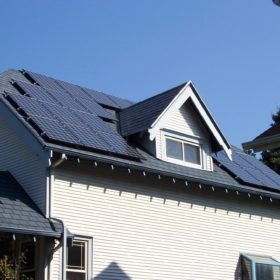
A German research group is trying to determine whether the combination of solar and storage with direct coupling and without the aid of maximum power point tracking (MPPT) electronics is feasible. According to its findings, this particular configuration might be efficient, but it will likely require special panels and batteries.
Researchers at Germany’s Jülich Institute for Energy and Climate Research (IEK-5) are looking at how the combination of a rooftop PV system and a storage system can be a feasible solution if direct coupling is applied and no maximum power point tracking (MPPT) electronics are adopted.
The scientists justified leaving the MPPT technology aside because of the costs it adds to rooftop solar+storage projects. They also mentioned complexity, power overhead, potential reliability issues, and interference signals as other factors.
“Both a PV harvester in an office room with low irradiance, non-demanding load, and high autonomy, and a PV system on a roof with high irradiance, demanding load, and partial autonomy, can operate efficiently without MPPT electronics if an appropriate battery is included,” the researchers stated.
They analyzed the two different configurations as a basic unit of a PV module, with a minimal number of cells coupled to a single secondary battery cell.
“These units can be part of a larger panel or system or used individually,” the group explained. “Calculations are performed for battery open circuit voltage range of 3.1 V to 4.6 V relevant for modern commercial Li-ion cells.”
The group said specific sets of experimental parameters for the PV system and the battery are required in order to find a proper combination. This includes the characteristic I-V profile of a PV module measured at different irradiance points of the target irradiance range, and a battery I-V characteristic at moderate state of charge. The batteries in this kind of project are not only a storage unit, but also an impedance-matching element that can match the source and the load to maximize the power transfer and minimize reflections, the research group claimed.
However, the practical implementation of the model may be difficult with standard solar modules and batteries, due to the limited spectrum of parameters they offer.
“Thus, fine-tuning of particular PV-battery combinations may require special PV modules, batteries or both,” the academics said.
They presented their research in From room to roof: How feasible is direct coupling of solar-battery power unit under variable irradiance?, recently published in Solar Energy and on the DirectScience website.
Lắp đặt điện mặt trời Khải Minh Tech
https://ift.tt/2X7bF6x
0906633505
info.khaiminhtech@gmail.com
80/39 Trần Quang Diệu, Phường 14, Quận 3
Lắp đặt điện mặt trời Khải Minh Tech
https://ift.tt/2ZH4TRU
Không có nhận xét nào:
Đăng nhận xét